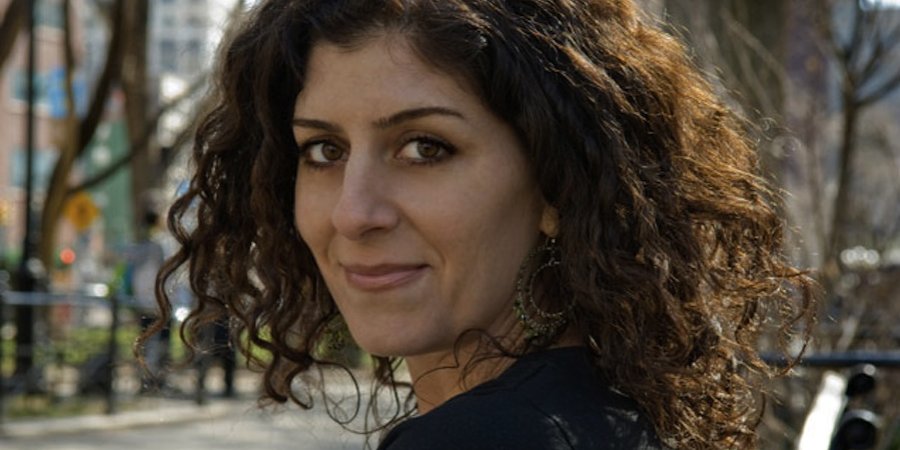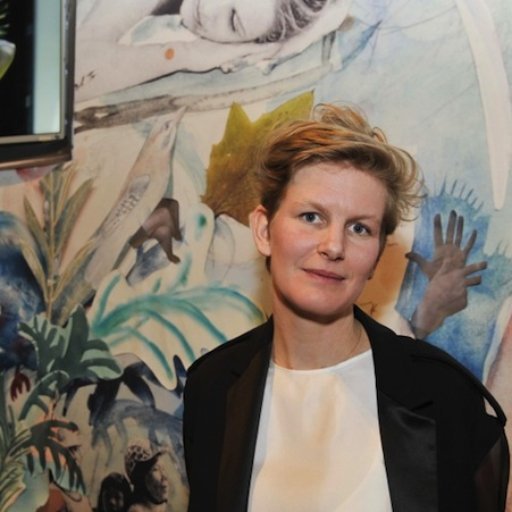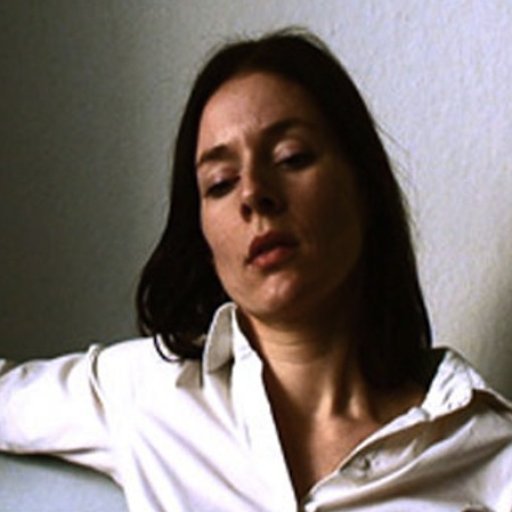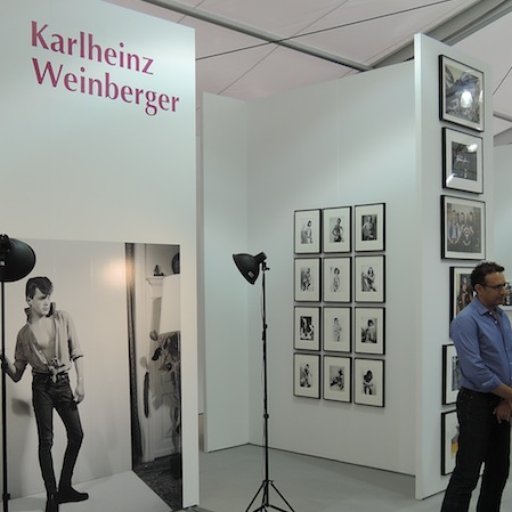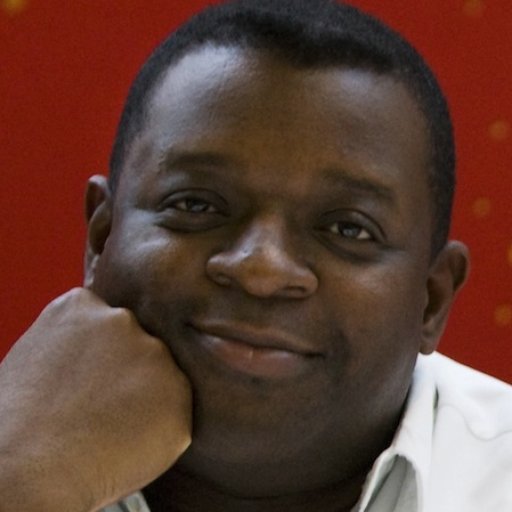EMILY JACIR
Alexander and Bonin (March 1-April 5)
A Palestinian artist who was born in the little town of Bethlehem, Emily Jacir has been acclaimed for her conceptual works that probe the Palestinian-Israeli divide, shining a stark light on the suffering of the Palestinian people. The tough-minded and often harrowing oeuvre has won her the Golden Lion at the 2007 Venice Biennale and the Guggenheim's 2008 Hugo Boss Prize. This month, at Alexander and Bonin, Jacir is debuting her first show in New York since her 2009 Guggenheim prize exhibition, presenting an installation that was originally commissioned by dOCUMENTA (13): a commemoration of the 30,000 books that Israeli troops seized from Palestinian homes in 1948, complete with cellphone photos she took of the looted books now stored at the Jewish National and University Library. The show coincides with a display at MoMA, which will screen her two-channel video Ramallah/New York (2004-5) in its Ronald S. and Jo Carole Lauder Building Lobby.
MATIAS FALDBAKKEN
Paula Cooper Gallery (February 28-April 5)
Making his solo-show debut at Paula Cooper gallery this month, the Norwegian artist Mathias Faldbakken likes to linger in the spaces between things, making works—minimally ornamented plastic bags, assemblages of containers, installations with jerry cans, packing tape, and cardboard—that are related to the shipping and construction industries, using their materials and vocabularies to talk about commerce. Described by the artist as "half-way monumental," the work in this show should further whet the appetites of his powerful collector base, which includes Museo Jumex's Eugenio Lopez, the Rubells, and the Speyers. Featured in the Nordic Pavilion in the 2005 Venice Biennale as well as dOCUMENTA (13), Faldbakken—who earned his MFA at the rigorously cool Städelschule—also pursues a side career as a novelist: over the last decade he has published a trilogy of books under the pen name Abo Rasul.
ROBERT HEINECKEN
MoMA (March 15-September 7)
How can you become one of America's most influential postwar photographers without using a camera? Find out this month at "Robert Heinecken: Object Matter," a landmark retrospective of work by the self-proclaimed "para-photographer," who rarely employed a camera, instead using darkroom processes to combine found photos from magazines, advertisements, pornography, and other forms of mass media—often in the service of volleying acid critiques at the vapidity of consumerist culture. Most famous for his 1966-67 series "Are You Rea," which lopped off the "l" from an ad to both suggest a name for the scantily clad women who appear in the works and to reference Man Ray's "rayograms" ("Rea" is meant to be pronounced "Ray"), Heinecken, who died in 2006, left a lasting legacy as a teacher: in 1966 he created one of the world's first conceptually driven photography programs at UCLA, where he stayed until moving to the School of the Art Institute of Chicago in 1996. This MoMA survey will introduce East Coast audiences to the L.A. artist, whose work ads a stark California counterpoint to the Pictures Generation's investigations.
ELEANOR ANTIN
ICA Boston (March 19-July 6)
"It has been part of woman’s glamour as an artistic subject that she was seen as pathetic, passive, in short—the superb victim…. I was determined to present women without pathos or helplessness." So wrote the artist Eleanor Antin in a feminist art statement for the Brooklyn Museum's Sackler Center. Her decades-long career (she was born in 1935) has been a sustained and multivalent campaign in pursuit of that goal, largely articulated in conceptual works filtered through performance, film, photography, installation, and writing. Her best-known pieces include Carving: A Traditional Sculpture—a 1972 performance piece in which she crash-dieted for a month, documenting the wizening of her naked body through photographs—as well as a series of pieces in video and other mediums that she created between 1972 and 1991 in which she assumed the guise of varied male and female characters of different historical periods and nationalities. This month, these personae are being spotlighted in a historic survey at ICA Boston, "Multiple Occupancy: Eleanor Antin's 'Selves.'"
KORAKRIT ARUNANONDCHAI
MoMA PS1 (March 9-May 25)
A 27-year-old wunderkind who already has a successful career as a teen pop star in his native Thailand, Korakrit Arunanondchai has lately been taking the New York art world by storm, staging totally out-there performances at key venues like last year's SculptureCenter gala and the MoMA PS1 party at the Delano hotel pool during Art Basel Miami Beach—both of which included fluid rapping, boy-bandy posing, and lots and lots of stonewashed denim. (Perhaps you may also remember him from MoMA PS1 director Klaus Biesenbach's "#inmiamiwithkrit" barrage of social media documentation of their road trip down to the fair.) Now, prepare to see the most complete expression of the artist's unique aesthetic sensibility when his first solo show debuts at the Long Island City museum this month. The video installation is inspired by Arunanondchai's interest in tourism, mortality, painting (particularly the body painting of artist and go-go dancer Duangjai Jansaunoi, who stirred up enormous controversy when she used her topless body to smear paint on canvas on "Thailand's Got Talent"), and denim, lots and lots of denim.
MARINE HUGONNIER
Galeria Fortes Vilaça (March 20-May 3)
Think you're brainy? Meet Marine Hugonnier. An artist with advanced degrees in both cultural anthropology and philosophy, the London-based Hugonnier uses photography, film, and collage to investigate the way that people apprehend the images they're looking at, filtering them through cultural preconceptions and collective histories. Her best-known series is probably Art for Modern Architecture, an ongoing project she has been doing over the past decade in which she covered the images in historically significant copies of the New York Times (the day the Berlin Wall fell, for instance) with bright geometric abstractions—sometimes taken from an Ellsworth Kelly book—to demonstrate that those images are so famous we can see them without seeing them: even with the geometric shield, we can visualize the rubble of the wall. This month, the artist—who has shown in both the 2003 and 2007 Venice Biennales as well as many of Europe's more avant-garde museums and is collected by Eugenio Lopez and the Zabludowiczes—will debut a new body of work at São Paulo's Galeria Fortes Vilaça in a show titled "The Bee, the Parrot, and the Jaguar."
LAURIE SIMMONS
Salon 94 Bowery (March 7-April 28)
Laurie Simmons, the acclaimed artist and (as we all now know) matriarch of America's hippest art family, is widely known for her photographs of dolls in domestic settings, which in recent years she has added an extra creep factor to by employing eerily realistic latex dolls. This month, Simmons is going through the looking glass with a new body of work at Salon 94 Bowery that turns her process on its head: instead of having dolls enact real, introspective scenarios, she has entered the cosplay community to find men and women who dress up in spandex suits and masks to become life-size doll characters. The new works focus on the fetish's Kigurumi sub-genre, in which people known as "dollers" assume fictional identities linked to their costumes and remains in character while venturing out in public. There will also be portraits of fashion models with manga eyes painted over their closed eyelids. The title, "Kigurumi, Dollars, and How We See," provides a key to Simmons's larger subject.
JORDAN WOLFSON
David Zwirner Gallery (March 6-April 19)
Born in 1980, the artist Jordan Wolfson has made short work of ascending to the top of the game. After landing a place in the 2006 Whitney Biennial, winning Frieze Foundation's Cartier Award, and eliciting a rave review from Roberta Smith (she said his video Animation, masks "has the hallmarks of a classic"), he has now landed representation with the blue-chip David Zwirner Gallery, where he will have his first solo show this month. Although Wolfson has staged performances—such as the piece during the 2009 Frieze Art Fair in which he had a particle physicist expound on string theory for audiences in the aisles—his true achievement lies in his splendid videos, beautiful animations, which he renders as expertly as any Pixar artist, grappling with representation, appropriation, and other Internet-era concerns. (Look for his 2009 film Con Leche, which features animated Diet Coke bottles filled with white liquid marching, "Fantasia"-style, through urban blight.) Now, at Zwirner, the artist is taking his preoccupation with Hollywood-style modes of visuality by debuting an animatronic sculpture of a woman in the gallery that audiences will be able to interact with. And don't worry, there will also be an animated film, Raspberry Poser (2012).











